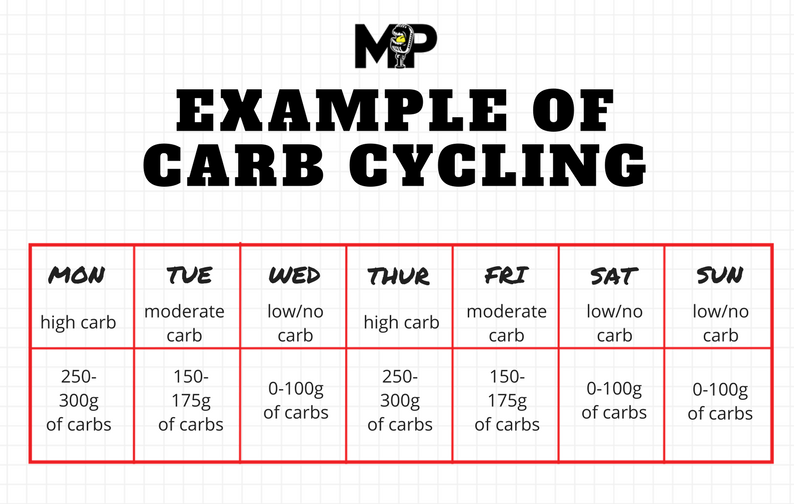
Carb Cycling 101: How It Works
Introduction
Have you ever felt stuck in the middle of a battle between keeping your weight in check and having enough energy for your workouts? If so, carbohydrate cycling might just be the game changer you need. This flexible eating plan switches between high- and low-carb days to help you boost your energy while also working toward your body goals. Whether you’re an athlete looking to enhance your performance or someone just trying to lose a few pounds, grasping the ins and outs of carbohydrate cycling can really level up your nutrition game.
In this article, we’re going to break down how carbohydrate cycling works, who it’s best for, and some practical ways you can bring it into your daily routine. Let’s explore together so you can make smart choices that fit your lifestyle!
—
Carb Cycling 101: How It Works
So, what exactly is carbohydrate cycling? It’s all about adjusting your carb intake based on how active you are. On the days when you’re gearing up for tough workouts, you’ll want to load up on carbs. But on those more relaxed or rest days, it’s time to cut back. By shifting your carb intake like this, you’re helping to replenish glycogen stores in your muscles, which is key to peak performance and recovery after those intense sessions.
Practical Tips for Getting Started:
– High-Carb Days: Try to consume around 2-2.5 grams of carbs for every pound you weigh. Think about packing in whole grains, fruits, and legumes to fuel those workouts.
– Low-Carb Days: Scale back to 0.5-1 gram per pound. Focus on proteins and healthy fats—lean meats, eggs, and avocados are great choices to keep you feeling full.
What the Research Says: Studies have shown that athletes who use carb cycling strategies tend to recover better during intense training, leading to improved endurance and overall performance.
—
One Size Doesn’t Fit All: Customize Your Plan
Here’s the truth: carbohydrate cycling isn’t right for everyone. How well it works for you depends on your muscle mass, metabolism, and how active you are overall. The key is to customize your plan so it fits your life and your body goals.
Here’s How to Map Out Your Carb Cycling Schedule:
1. Assess Your Activity Level: Are your workouts high-energy or more chill? Adjust your carbs accordingly.
2. Know Your Goals: Want to maintain or build muscle? You’ll need more carbs than someone who’s aiming to drop weight.
3. Experiment and Observe: Keep track of what you eat and how you feel. A simple journal can help you fine-tune your approach as you go along.
Take It from the Experts: Nutritionists emphasize that personalizing your carb intake can lead to better success with carb cycling since every individual’s needs can vary quite a bit.
—
Caution: Is It Right for You?
While carb cycling can be a fantastic option for athletes looking to ramp up their performance, it isn’t a one-size-fits-all solution. If you have specific health concerns, such as diabetes or a history of eating disorders, it’s really wise to tread carefully and chat with a healthcare professional before making any significant dietary shifts.
Things to Keep in Mind:
– Consult a Professional: Before diving into carb cycling, especially if you have a medical condition, reach out to a registered dietitian or nutritionist. They can help craft a plan that works for you.
– Watch for Nutrient Gaps: Cutting back on carbs for a long period without planning can lead to missing out on essential vitamins and minerals. Make sure your meals still include plenty of wholesome foods.
—
How to Put This Into Action
Ready to give carbohydrate cycling a go? Here’s a handy guide to help you jump in safely and effectively:
1. Set Your Goals: Get clear on what you want to achieve. Is it weight loss, muscle gain, or boosted endurance?
2. Plan Your Week: Create a weekly schedule that lays out your high, moderate, and low-carb days based on your workout intensity.
3. Meal Prep Like a Pro: Spend some time prepping meals in advance. This will help you stay on track. Load up on healthy carbs for those high-carb days and stock up on proteins and fats for your low-carb days.
4. Track Your Journey: Keep tabs on how your weight, energy levels, and performance are responding. Adjust your plan as you go along to stay aligned with your goals.
Conclusion
Carbohydrate cycling can be a powerful way to supercharge your nutrition, whether you’re an athlete aiming for peak performance or just looking to manage your weight. Just remember, it’s not for everyone. Taking the time to customize your approach—and consulting with professionals—can help you enjoy the benefits while staying on the safe side.
Thinking about trying carbohydrate cycling? I’d love to hear your thoughts, questions, or experiences in the comments! And don’t forget to check out more information on nutrition strategies and fitness tips to continue your journey. You’ve got this!
Written by Alexander Babinets
Founder of Express Fitness, certified coach, and author helping people get in shape without excuses.
📍 expressfitness.ca | 📩 info@expressfitness.ca
👤 More about me → alexanderbabinets.com
Hashtags: #carb #cycling #carbohydrate #days #plan #help #performance #carbs #weight #high #goals #energy #workouts #just #works
